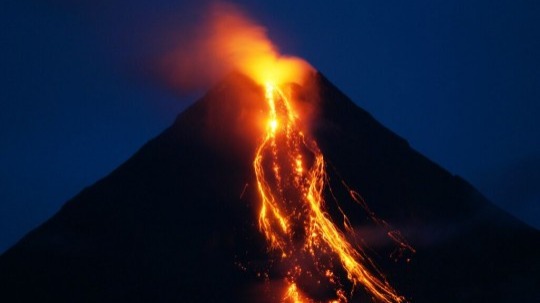...











This List is closed to voting and commenting
Top 10 Natural Disasters

| 0 | 0 | 152 |
By: Alison Parker


| In: Nature
The earth’s weather is very mysterious. One day it is sunny the next it is raining. In fact, sometimes as you are driving down the road, you hit the “wall” between a sunny day and a sever thunderstorm. Man has spent years trying to predict weather patterns but it is still an inexact science. This is a list of the most common occurring disasters of nature:
Refresh

1 | 0.00%
Hurricanes, tropical cyclones, and typhoons are different names for the same phenomenon: a cyclonic storm system that forms over the oceans. It is caused by evaporated water that comes off of the ocean and becomes a storm. The Coriolis Effect causes the storms to spin, and a hurricane is declared when this spinning mass of storms attains a wind speed greater than 74 mph. Hurricane is used for these phenomena in the Atlantic and eastern Pacific Oceans, tropical cyclone in the Indian, and typhoon in the western Pacific.

2 | 0.00%
An earthquake is the result of a sudden release of energy in the Earth’s crust that creates seismic waves. Earthquakes are recorded with a seismometer, also known as a seismograph. The magnitude of an earthquake is conventionally reported on the Richter scale, with magnitude 3 or lower earthquakes being mostly imperceptible and magnitude 7 causing serious damage over large areas. Intensity of shaking is measured on the modified Mercalli scale. At the Earth’s surface, earthquakes manifest themselves by shaking and sometimes displacement of the ground.

3 | 0.00%
Tornadoes are violent, rotating columns of air which can blow at speeds between 50 and 300 mph, and possibly higher. Tornadoes can occur one at a time, or can occur in large tornado outbreaks along squall lines or in other large areas of thunderstorm development. Waterspouts are tornadoes occurring over water in light rain conditions.

4 | 0.00%
A volcanic eruption is the point in which a volcano is active and releases lava and poisonous gasses in to the air. They range from daily small eruptions to extremely infrequent supervolcano eruptions (where the volcano expels at least 1,000 cubic kilometers of material.) Some eruptions form pyroclastic flows, which are high-temperature clouds of ash and steam that can travel down mountainsides at speeds exceeding that of an airliner.

5 | 0.00%
A tsunami is a series of waves created when a body of water, such as an ocean, is rapidly displaced. Earthquakes, mass movements above or below water, volcanic eruptions and other underwater explosions, landslides, large meteorite impacts comet impacts and testing with nuclear weapons at sea all have the potential to generate a tsunami. A tsunami is not the same thing as a tidal wave, which will generally have a far less damaging effect than a Tsunami.

6 | 0.00%
A flood is an overflow of an expanse of water that submerges land, a deluge. It is usually due to the volume of water within a body of water, such as a river or lake, exceeding the total capacity of the body, and as a result some of the water flows or sits outside of the normal perimeter of the body. It can also occur in rivers, when the strength of the river is so high it flows right out of the river channel , usually at corners or meanders.

7 | 0.00%
Wildfires, or forest fires, are uncontrolled fires burning in wildland areas. Common causes include lightning, human carelessness, arson, volcano eruption, and pyroclastic cloud from active volcano. The can be a threat to those in rural areas and also to wildlife. Wildfires can also produce ember attacks, where floating embers set fire to buildings at a distance from the fire itself.

8 | 0.00%
A drought is an extended period of months or years when a region suffers a severe deficiency in its water supply. Generally, this occurs when a region receives consistently below average rainfall. It can have a substantial impact on the ecosystem and agriculture of the affected region. Although droughts can persist for several years, even a short, intense drought can cause significant damage and harm the local economy.

9 | 0.00%
An avalanche is a geophysical hazard involving a slide of a large snow or rock mass down a mountainside, caused when a buildup of material is released down a slope, it is one of the major dangers faced in the mountains in winter. As avalanches move down the slope they may entrain snow from the snowpack and grow in size. The snow may also mix with the air and form a powder cloud. An avalanche with a powder cloud is known as a powder snow avalanche. The powder cloud is a turbulent suspension of snow particles that flows as a gravity current.

10 | 0.00%
A landslide is a disaster involving elements of the ground, including rocks, trees, parts of houses, and anything else which may happen to be swept up. Landslides can be caused by an earthquake, volcanic eruptions, or general instability in the surrounding land. Mudslides or mudflows, are a special case of landslides, in which heavy rainfall causes loose soil on steep terrain to collapse and slide downwards.
Refresh
